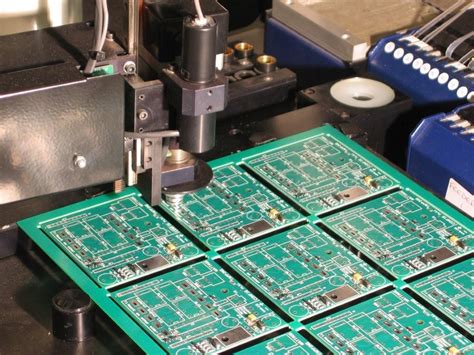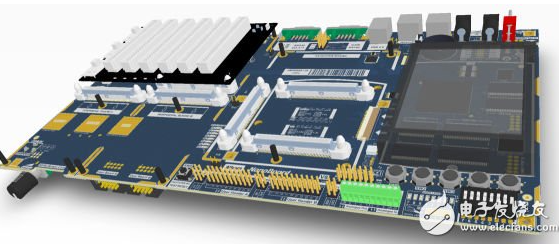Black flex pcb
Advantages Of Black Flex PCB In Modern Electronics
In the rapidly evolving landscape of modern electronics, the demand for more efficient, compact, and reliable components has never been greater. Among the innovations meeting these demands is the black flex printed circuit board (PCB), a versatile and increasingly popular choice in the design and manufacturing of electronic devices. The advantages of black flex PCBs are manifold, making them a preferred option for engineers and designers seeking to push the boundaries of technology.
To begin with, black flex PCBs offer unparalleled flexibility, which is a significant advantage in applications where space is at a premium. Unlike traditional rigid PCBs, flex PCBs can be bent, folded, and twisted without compromising their functionality. This flexibility allows for more creative and compact designs, enabling the development of smaller and more efficient devices. For instance, in wearable technology, where space and weight are critical considerations, black flex PCBs provide the perfect solution by conforming to the contours of the human body without adding unnecessary bulk.
Moreover, the aesthetic appeal of black flex PCBs cannot be overlooked.
The sleek, modern appearance of a black substrate can enhance the overall design of a product, making it more attractive to consumers. This is particularly important in consumer electronics, where the visual appeal of a device can significantly influence purchasing decisions. The black color also serves a functional purpose by reducing glare and reflections, which can be beneficial in applications such as displays and lighting.
In addition to their flexibility and aesthetic benefits, black flex PCBs are known for their durability and reliability.
The materials used in their construction are typically resistant to heat, moisture, and chemicals, making them suitable for use in harsh environments. This resilience ensures that devices incorporating black flex PCBs can maintain their performance over time, even under challenging conditions. Furthermore, the ability to withstand repeated flexing without damage extends the lifespan of these PCBs, reducing the need for frequent replacements and thereby lowering maintenance costs.
Another significant advantage of black flex PCBs is their potential for reducing electromagnetic interference (EMI).
The black color can help absorb electromagnetic waves, minimizing interference with other components in a device. This is particularly advantageous in high-frequency applications, where EMI can be a major concern. By mitigating these issues, black flex PCBs contribute to the overall performance and reliability of electronic systems.
Furthermore, the use of black flex PCBs can lead to cost savings in the manufacturing process.
Their ability to integrate multiple components into a single, flexible substrate reduces the need for additional connectors and cables, simplifying assembly and reducing material costs. This integration also results in a lighter and more compact final product, which can be advantageous in terms of shipping and handling.
In conclusion, the advantages of black flex PCBs in modern electronics are numerous and compelling. Their flexibility, aesthetic appeal, durability, EMI reduction capabilities, and cost-effectiveness make them an ideal choice for a wide range of applications. As the demand for more advanced and efficient electronic devices continues to grow, the role of black flex PCBs in meeting these challenges is likely to become even more prominent. By embracing this innovative technology, manufacturers can create products that not only meet but exceed the expectations of today’s discerning consumers.

Design Considerations For Black Flex PCB Applications
When designing black flex PCBs, several critical considerations must be taken into account to ensure optimal performance and reliability. Black flex PCBs, known for their flexibility and aesthetic appeal, are increasingly used in various applications, from consumer electronics to advanced medical devices. The unique properties of these PCBs necessitate a thorough understanding of their design requirements to fully leverage their potential.
To begin with, material selection is paramount in the design of black flex PCBs.
The choice of substrate material significantly influences the board’s flexibility, thermal management, and overall durability. Polyimide is a popular choice due to its excellent thermal stability and mechanical properties. However, the addition of black pigmentation can affect these properties, necessitating careful evaluation to maintain the desired performance characteristics. Furthermore, the adhesive used in the lamination process must be compatible with the black pigment to prevent any adverse chemical reactions that could compromise the board’s integrity.
In addition to material considerations, the layout design of black flex PCBs requires meticulous attention.
The flexibility of these boards allows for innovative design configurations, but it also introduces challenges such as potential signal integrity issues. To mitigate these, designers must carefully plan the routing of traces, ensuring that they are not subjected to excessive mechanical stress during flexing. Employing techniques such as staggered trace routing and maintaining adequate spacing between traces can help preserve signal integrity and prevent short circuits.
Moreover, the thermal management of black flex PCBs is another crucial aspect that must be addressed during the design phase.
The black color, while aesthetically pleasing, can absorb more heat compared to lighter-colored PCBs. This necessitates the implementation of effective thermal management strategies to dissipate heat efficiently and prevent overheating. Techniques such as incorporating thermal vias, using heat spreaders, and optimizing the placement of heat-generating components can significantly enhance the thermal performance of black flex PCBs.
Transitioning to the manufacturing process, it is essential to consider the implications of the black pigmentation on the production of flex PCBs.
The pigmentation can affect the laser cutting and drilling processes, potentially leading to variations in precision and quality. Therefore, manufacturers must adjust their processes to accommodate these differences, ensuring that the final product meets the required specifications. Additionally, the black color can pose challenges in visual inspection and testing, necessitating the use of advanced inspection techniques to ensure the board’s quality and functionality.
Finally, the application-specific requirements of black flex PCBs must be taken into account during the design process.
Different applications may impose unique demands on the PCB, such as increased flexibility for wearable devices or enhanced durability for automotive applications. Understanding these requirements allows designers to tailor the PCB design to meet the specific needs of the application, ensuring optimal performance and longevity.
In conclusion, designing black flex PCBs involves a comprehensive approach that considers material selection, layout design, thermal management, manufacturing processes, and application-specific requirements. By addressing these considerations, designers can create black flex PCBs that not only meet aesthetic demands but also deliver reliable and efficient performance across a wide range of applications. As technology continues to advance, the demand for innovative and versatile PCB solutions like black flex PCBs is expected to grow, underscoring the importance of thoughtful and informed design practices.

Manufacturing Process Of Black Flex PCB
The manufacturing process of black flex PCBs, or flexible printed circuit boards, is a sophisticated and intricate procedure that requires precision and expertise. These PCBs are distinguished by their flexibility and the distinctive black color of their solder mask, which not only enhances their aesthetic appeal but also offers specific functional advantages. The journey from raw materials to a finished black flex PCB involves several critical stages, each contributing to the overall quality and performance of the final product.
To begin with, the selection of materials is a crucial step in the manufacturing process.
Black flex PCBs are typically made from polyimide films, which are chosen for their excellent thermal stability and flexibility. These films serve as the substrate upon which the circuit is built. The choice of a black solder mask is not merely for visual differentiation; it also provides superior UV resistance and can help in reducing light reflection, which is particularly beneficial in optical applications.
Following the selection of materials, the next phase involves the design and layout of the circuit.
This is achieved using advanced computer-aided design (CAD) software, which allows engineers to create precise and intricate circuit patterns. The design is then transferred onto the polyimide substrate through a process known as photolithography. In this step, a photosensitive resist is applied to the substrate, and ultraviolet light is used to etch the desired circuit pattern onto the material. This process requires meticulous attention to detail to ensure that the circuit paths are accurately defined.
Once the circuit pattern is established, the next stage is the etching process.
This involves removing the unwanted copper from the substrate, leaving behind only the desired circuit traces. The etching process must be carefully controlled to prevent over-etching, which can damage the circuit, or under-etching, which can result in incomplete circuit paths. After etching, the substrate undergoes a thorough cleaning process to remove any residual chemicals and debris.
Subsequently, the application of the black solder mask takes place.
This step is critical as it not only provides the PCB with its characteristic black appearance but also serves to protect the circuit traces from environmental factors such as moisture and dust. The solder mask is applied using a screen-printing technique, followed by a curing process to ensure it adheres properly to the substrate.
The final stages of manufacturing involve drilling and plating.
Holes are drilled into the PCB to accommodate components and connectors, and these holes are then plated with a conductive material, typically copper, to ensure electrical connectivity. The PCB is then subjected to a series of tests to verify its functionality and reliability. These tests include electrical testing to check for continuity and shorts, as well as mechanical testing to assess the board’s flexibility and durability.
In conclusion, the manufacturing process of black flex PCBs is a complex and multi-faceted procedure that demands precision at every stage. From material selection to final testing, each step is integral to producing a high-quality product that meets the rigorous demands of modern electronic applications. The unique properties of black flex PCBs, including their flexibility and enhanced UV resistance, make them an invaluable component in a wide range of industries, from consumer electronics to aerospace.

Innovations In Black Flex PCB Technology
In recent years, the field of electronics has witnessed remarkable advancements, particularly in the realm of printed circuit boards (PCBs). Among these innovations, black flex PCBs have emerged as a significant development, offering a range of benefits that are transforming the way electronic devices are designed and manufactured. As the demand for more compact, efficient, and versatile electronic components continues to grow, black flex PCBs are playing a crucial role in meeting these needs.
To begin with, black flex PCBs are a type of flexible circuit board that is characterized by its distinctive black color.
This color is not merely aesthetic; it serves functional purposes as well. The black solder mask used in these PCBs provides enhanced UV resistance, which is particularly beneficial in applications where the circuit board may be exposed to sunlight or other sources of ultraviolet light. This added protection helps to prolong the lifespan of the PCB, ensuring reliable performance over time.
Moreover, the flexibility of black flex PCBs offers significant advantages in terms of design and application.
Unlike traditional rigid PCBs, flex PCBs can be bent, folded, and twisted to fit into unconventional spaces. This flexibility is particularly advantageous in the design of modern electronic devices, which are becoming increasingly compact and complex. For instance, in wearable technology, where space is at a premium, black flex PCBs can be integrated seamlessly into the design, allowing for more innovative and ergonomic products.
In addition to their flexibility, black flex PCBs are also known for their lightweight nature.
This characteristic is crucial in applications where weight is a critical factor, such as in aerospace and automotive industries. By reducing the weight of electronic components, manufacturers can improve fuel efficiency and overall performance of vehicles and aircraft. Furthermore, the lightweight nature of these PCBs does not compromise their durability. They are designed to withstand harsh environmental conditions, including extreme temperatures and vibrations, making them suitable for a wide range of applications.
Another noteworthy aspect of black flex PCB technology is its contribution to the miniaturization of electronic devices.
As consumer demand for smaller and more portable devices continues to rise, manufacturers are under pressure to reduce the size of their products without sacrificing functionality. Black flex PCBs enable this miniaturization by allowing for more compact circuit designs. The ability to layer circuits and components in a flexible format means that more functionality can be packed into a smaller space, paving the way for the next generation of electronic devices.
Furthermore, the manufacturing process of black flex PCBs has seen significant improvements, leading to increased efficiency and reduced costs.
Advances in materials and fabrication techniques have made it possible to produce these PCBs with greater precision and consistency. This not only enhances the quality of the final product but also reduces waste and production time, making it a more sustainable option for manufacturers.
In conclusion, the innovations in black flex PCB technology are reshaping the landscape of electronic design and manufacturing. With their unique combination of flexibility, durability, and efficiency, black flex PCBs are enabling the development of more advanced and compact electronic devices. As technology continues to evolve, it is likely that the role of black flex PCBs will become even more prominent, driving further advancements in the electronics industry.







